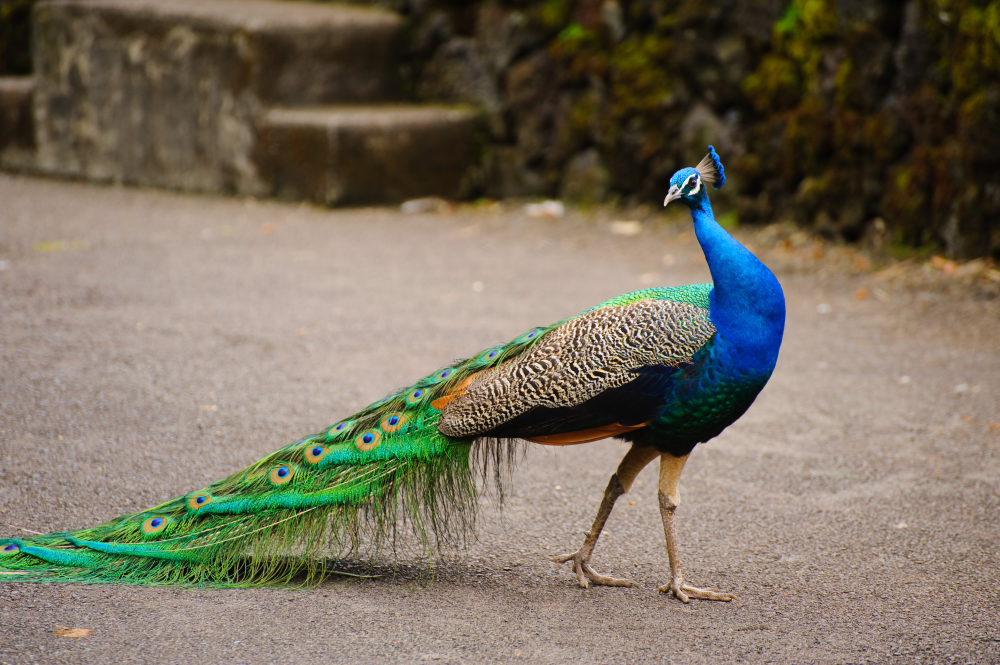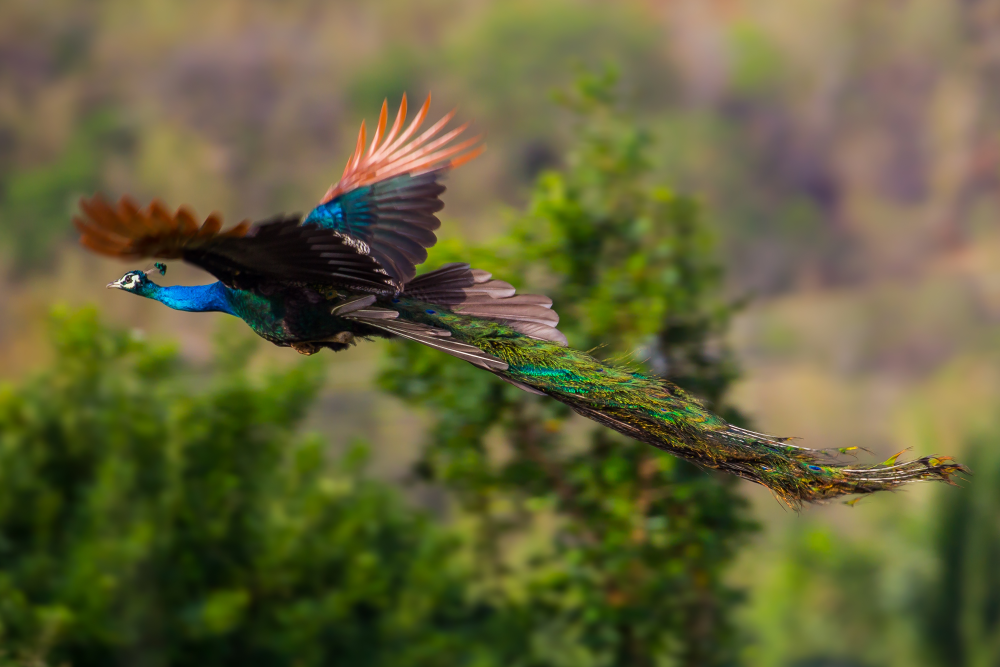Wind rushes around your ears as a cascading train of iridescent feathers soars over your head. Toes curled, neck extended, rear-end seemingly doomed for landing: a peacock has just taken flight, and frankly, it makes no sense at all.
The elaborate ornament’s eye-like feather tips are an alluring display to the opposite sex (and other males), and its size is held up as a shimmering example of an exaggerated sexually selected trait. But when the tail tips are down and the train is doing what trains do best, you can’t help but wonder: can peacocks fly? The answer is yes – and while it was thought that the fact that they can was precisely what makes them so impressive to potential mates, research has found the enormous tails might not be all that bad for flying.
Why do peacocks spread their feathers?
Peacocks spread their feathers to attract a mate, presenting many colors simultaneously as part of an impressive and complex display. According to a 2013 paper in the journal Behavioral Ecology, males can have over 150 feathers in their elaborate tail, known as a train, each topped with an iridescent eye-like pattern known as an ocellus, or eyespot.

Those saucy eyespots appear to be crucial to a peacock’s reproductive success.
Image credit: Karen Grigoryan / Shutterstock.com
Each ocellus on the peacock’s tail exhibits a rich diversity of color thanks to nanostructures that create a purple-black center surrounded by concentric blue-green and bronze-gold circles. The study found that when those eyespots are masked, their reproductive success drops to virtually zero, so spreading their feathers is crucial if they want to pass on their genes to the next generation.
But isn’t it all a bit cumbersome?
Yes.
If you were to ask a male peacock, this science communicator reckons they might have suggestions for anything other than a literal train when taking to the skies. If only they weren’t so goddamn sexy.
The enduring appeal of the cumbersome peacock train was thought to rest in the fact that it is so hefty, because if a male peacock is strutting around – all alive and uneaten by predators – that shows that he is a strong male, capable of surviving despite dragging around such a weighty ornament. However, if it has its downsides, research suggests they have little to do with flying – or, at least, the taking off part.

You have to admit, it is pretty impressive.
Image credit: kajornyot wildlife photography / Shutterstock.com
Can peacocks fly?
Yes, peacocks can fly. In fact, research found that they can do it pretty well despite having such big tails.
“The peacock’s train is often cited as a classic example of a ‘costly’ product of sexual selection,” wrote the authors of a 2014 paper in the Journal Of Experimental Biology that concluded the peacock’s train doesn’t detrimentally affect take-off flight performance.
“This is partly due to the low drag of the train and its consequent trivial effects on take-off power. These results do not necessarily mean there are no costs associated with possessing an ornate train; rather, any such costs are small with limited meaningful functional significance to take-off performance.”
So if you see a feathered crucifix ascending from the heavens, an iridescent halo shimmering aloft its shadowy silhouette, you’ve probably not been visited by a biblically accurate angel. A flying peacock is just coming in to land, and it’s got designs on your sandwich.
All “explainer” articles are confirmed by fact checkers to be correct at time of publishing. Text, images, and links may be edited, removed, or added to at a later date to keep information current.
Source Link: Can Peacocks Fly?